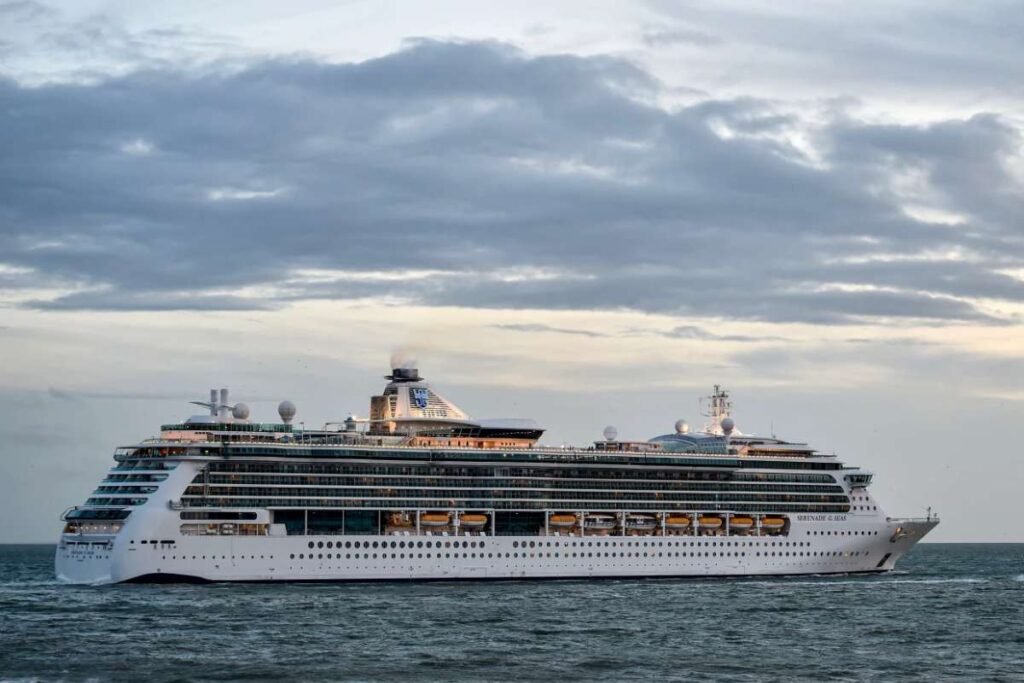Nearly 100 passengers and crew aboard Royal Caribbean cruises Serenade of the Seas contracted norovirus sickens during a 13-day cruise from San Diego to Miami, officials confirmed this week. The outbreak underscores the risks posed by the highly contagious virus in enclosed, shared environments such as cruise ships.
How the outbreak unfolded?
Royal Caribbean cruise said crew members isolated affected individuals and enhanced cleaning protocols once cases were reported. The U.S. Centers for Disease Control and Prevention (CDC) is monitoring the incident as part of its Vessel Sanitation Program, which investigates gastrointestinal illness on cruise ships sailing to or from U.S. ports.
Symptoms were first reported several days into the voyage, according to company officials. By the end of the Royal Caribbean cruises , nearly 100 people—both passengers and crew—experienced nausea, vomiting, diarrhea, and other signs of infection. The ship completed its journey to Miami on schedule.
What is norovirus sickens ?
Norovirus sickens is the leading cause of acute gastroenteritis in the United States. The virus spreads through contaminated food and water, direct person-to-person contact, and contact with infected surfaces. According to the CDC, the illness causes an estimated 19 to 21 million cases annually in the United States.
The virus is extremely contagious, requiring only a small number of particles to cause infection. Infected individuals can continue to shed the virus for days after symptoms subside, making containment difficult in settings with frequent close contact.
Although often referred to as the “stomach flu,” norovirus sickens is not related to influenza. Outbreaks are most common during winter months, between November and April in the United States.
Symptoms and risks
Illness typically begins 12 to 48 hours after exposure. Symptoms include sudden nausea, vomiting, watery diarrhea, and stomach cramps. Other effects may include fever, headache, body aches, and fatigue.
Most people recover within one to three days without medical treatment. However, dehydration is a serious concern, particularly for young children, older adults, and people with underlying health conditions. Signs of dehydration include reduced urination, dry mouth, dizziness, and, in children, unusual drowsiness or irritability.
Prevention measures
Health experts recommend frequent handwashing with soap and water, especially after using the bathroom, changing diapers, or before eating and preparing food. Alcohol-based sanitizers are less effective against norovirus sickens . Contaminated surfaces should be cleaned with bleach-based disinfectants.
On cruise ships, measures such as isolating ill passengers, disinfecting common areas, and suspending self-service dining are often implemented to contain outbreaks. Travelers are advised to report symptoms immediately to medical staff and avoid close contact with others if ill.
Broader impact
Norovirus sickens outbreaks occur in a variety of settings including schools, nursing homes, restaurants, and other group environments. While most cases are mild and self-limiting, the virus’s persistence on surfaces and high transmissibility make it a significant public health concern.
Officials emphasized that passengers recovering from norovirus should avoid preparing food for others until at least two days after symptoms end. Public health agencies continue to remind travelers that while cruise ships occasionally make headlines for outbreaks, the virus is widespread in communities worldwide.
Source: https://www.independent.co.uk/travel/cruise/royal-caribbean-fifth-icon-cruise-ship-b2838095.html









